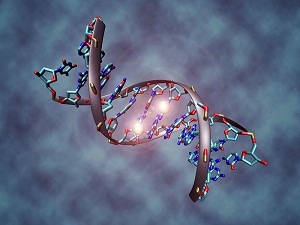 The polymerase chain reaction is a widely used technique for amplification of DNA products for genetic studies, DNA fingerprinting, clinical diagnostics, forensics and many more. Non-specific amplification of PCR products and the formation of primer dimers are the major problems during a PCR reaction. The main reason is due to the mild activity of polymerases at low temperatures and the binding of primers at nonspecific sites. As a result, even before the start of PCR amplification non-specific gene products and primer dimers are formed. The yield of target DNA is reduced as the polymerase, nucleotides, and primers are consumed. Hot start PCR methods are used to avoid this problem.
The polymerase chain reaction is a widely used technique for amplification of DNA products for genetic studies, DNA fingerprinting, clinical diagnostics, forensics and many more. Non-specific amplification of PCR products and the formation of primer dimers are the major problems during a PCR reaction. The main reason is due to the mild activity of polymerases at low temperatures and the binding of primers at nonspecific sites. As a result, even before the start of PCR amplification non-specific gene products and primer dimers are formed. The yield of target DNA is reduced as the polymerase, nucleotides, and primers are consumed. Hot start PCR methods are used to avoid this problem.
Hot Start PCR prevents mispriming, primer-dimer formation, hassle-free PCR set up of numerous samples at room temperature and hence suitable for high throughput screening. Prevents primer degradation during reaction setup. Various approaches to hot start PCR reaction are:
- Assembling PCR reaction at a temperature greater than annealing temperatures (70°C) helps in high sensitivity and specificity.
- Overlaying of reaction mix with oil or wax separating polymerase from other reaction components is one of the oldest Hot start method used to avoid non-specific priming. The oil or wax melts at higher temperatures and polymerase gets in contact with the reaction mix and the reaction takes place.
- In some cases, polymerase enzyme is added only after the reaction mix is preheated to 85°C for 5-10 min to avoid mispriming.
- Primer Modification: 4-Oxo-1-Pentyl (OXP) Phosphotriester modification on 3’ terminal and penultimate linkages of oligonucleotides are also used in hot start method, where the primer extension is inhibited at low temperatures in the presence of polymerase. At high temperatures, the primers convert into unmodified phosphor dieter primer suitable for polymerase binding resulting in enhancement of specificity and efficiency.
- Chemical modification: Chemical substances, like anhydride, are used to modify polymerases that are not able to work at normal room temperatures they are only activated at high temperatures. Anhydride binds with DNA polymerase and forms lysine polymer. Chemical modification slightly affects the polymerase activity for amplifying genes larger than 3 kb. During initial denaturation, additional time is required (10-15 min) for complete activation of the polymerase free of chemical modification. But this step sometimes results in deprivation of template DNA and thereby effects the quality of the PCR product.
- Antibody Modification: Antibodies specific to polymerases are added to block the polymerase activity at room temperature. In the denaturation step, the antibody releases the enzyme and gets denatured. The free enzyme is usually active and the reaction occurs. Antibodies are from animal origin and the contaminants sometimes interfere with PCR reaction. Unlike with chemically modified Polymerase, additional time is not required during initial denaturation step.
References:
- D'Aquila, R T et al. “Maximizing sensitivity and specificity of PCR by pre-amplification heating.” Nucleic acids research 19,13 (1991): 3749.
- Coleman, W. B., & Tsongalis, G. J. (2017).Laboratory Approaches in Molecular Pathology—The Polymerase Chain Reaction. Diagnostic Molecular Pathology, 15–23.






